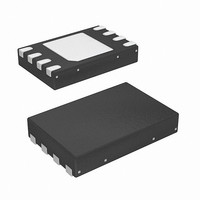SE97BTP,547 NXP Semiconductors, SE97BTP,547 Datasheet - Page 11

SE97BTP,547
Manufacturer Part Number
SE97BTP,547
Description
IC TEMP SENSOR DIMM 8HWSON
Manufacturer
NXP Semiconductors
Datasheet
1.SE97BTP547.pdf
(53 pages)
Specifications of SE97BTP,547
Package / Case
8-WSON (Exposed Pad), 8-HWSON
Function
Temp Monitoring System (Sensor)
Topology
ADC (Sigma Delta), Comparator, Register Bank
Sensor Type
Internal
Sensing Temperature
-40°C ~ 125°C
Output Type
I²C™/SMBus™
Output Alarm
Yes
Output Fan
Yes
Voltage - Supply
3 V ~ 3.6 V
Operating Temperature
-40°C ~ 125°C
Mounting Type
Surface Mount
Temperature Threshold
+ 150 C
Full Temp Accuracy
2 C
Digital Output - Bus Interface
I2C
Digital Output - Number Of Bits
11 bit
Supply Voltage (max)
3.6 V
Supply Voltage (min)
3 V
Description/function
Temperature Sensor
Maximum Operating Temperature
+ 125 C
Minimum Operating Temperature
- 40 C
Lead Free Status / RoHS Status
Lead free / RoHS Compliant
Lead Free Status / RoHS Status
Lead free / RoHS Compliant, Lead free / RoHS Compliant
Other names
568-5055-2
NXP Semiconductors
SE97B_1
Product data sheet
7.4.1 What temperature is read when conversion is in progress
7.4 Conversion rate
7.5 Power-up default condition
7.6 Device initialization
The conversion time is the amount of time required for the ADC to complete a
temperature measurement for the local temperature sensor. The conversion rate is the
inverse of the conversion period which describes the number of cycles the temperature
measurement completes in one second—the faster the conversion rate, the faster the
temperature reading is updated. The SE97B’s conversion rate is at least 8 Hz or 125 ms.
The SE97B has been designed to ensure a valid temperature is always available. When a
read to the temperature register is initiated through the SMBus, the device checks to see if
the temperature conversion process (Analog-to-Digital conversion) is complete and a new
temperature is available:
It is possible that while SMBus Master is reading the temperature register, a new
temperature conversion completes. However, this will not affect the data (MSB or LSB)
that is being shifted out. On the next read of the temperature register, the new
temperature value will be shifted out.
After power-on, the SE97B is initialized to the following default condition:
SE97B temperature sensors have programmable registers, which, upon power-up, default
to zero. The open-drain EVENT output is default to being disabled, comparator mode and
active LOW. The alarm trigger registers default to being unprotected. The configuration
registers, upper and lower alarm boundary registers and critical temperature window are
defaulted to zero and need to be programmed to the desired values. SMBus TIMEOUT
feature defaults to being enabled and can be programmed to disable. These registers are
required to be initialized before the device can properly function. Except for the SPD,
which does not have any programmable registers, and does not need to be initialized.
•
•
•
•
•
•
•
•
•
•
If the temperature conversion process is complete, then the new temperature value is
sent out on the SMBus.
If the temperature conversion process in not complete, then the previous temperature
value is sent out on the SMBus.
Starts monitoring local sensor
EVENT register is cleared; EVENT output is pulled HIGH by external pull-ups
EVENT hysteresis is defaulted to 0 °C
Command pointer is defaulted to ‘00h’
Critical Temp, Alarm Temperature Upper and Lower Boundary Trip register are
defaulted to 0 °C
Capability register is defaulted to ‘00F7h’ for the B-grade and VHV capability,
EVENT de-asserted and SMBus TIMEOUT between 25 ms and 35 ms enabled.
Operational mode: comparator
SMBus register is defaulted to ‘21h’
Rev. 01 — 27 January 2010
DDR memory module temp sensor with integrated SPD
© NXP B.V. 2010. All rights reserved.
SE97B
11 of 53














